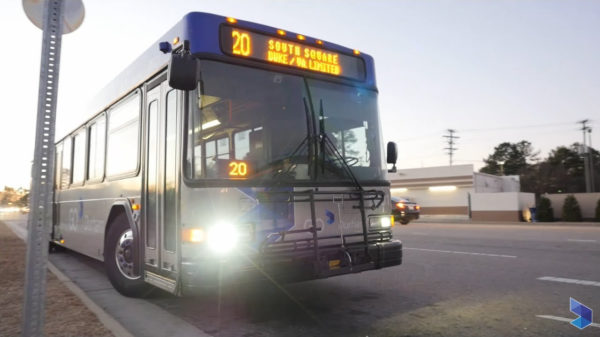

DURHAM, N.C. – Over the coming year, GoDurham riders will experience better reliability, comfort, convenience, safety, and other improvements thanks to a new project designed to enhance rider experiences.
The City of Durham Transportation Department is launching the Better Bus Project, a $1.5 million initiative funded by the Durham County Transit Plan, to design sidewalk, bus stop, and street improvements that enhance the GoDurham bus riding experience by providing safe pedestrian access to bus stops, enhanced comfort at bus stops, and improved bus service on routes.
“The goal of these projects is to transform the experience of GoDurham bus riders with high-quality infrastructure along major corridors and safety improvements that prioritize pedestrians and transit riders” said Director Sean Egan with the City’s Transportation Department. “Additionally, these investments focus benefits in traditionally disadvantaged communities when viewed through an equity lens as more than 80% of GoDurham riders are people of color, 75% have household incomes less than $25,000, and more than two-thirds live in zero-car households.”
This new initiative consists of six related projects in five areas that will be completed over the next 12 months:
Bus Access Project:
The City has increasingly focused on coordinating bus stop and service improvements with sidewalk and crosswalk improvements that enhance access to stops. Pedestrian access to bus stops in many neighborhoods is limited by incomplete sidewalks, inadequate crosswalks, busy driveways, and other hazards. This project will identify and design sidewalks, crosswalks, and other facilities to address gaps and hazards on the streets around bus stops.
Bus Speed and Reliability Project:
Bus speed is the ability of the bus to move along a route in a reasonable amount of time. Bus reliability is the ability of the bus to arrive at stops at consistent and predictable times. Improving GoDurham bus speed and reliability will require the City to address congestion, parking conflicts, signal timing, intersection configuration, and other factors. This project will evaluate bus speed and reliability issues identified on high demand GoDurham routes, and design bus priority spot projects that modify traffic controls, pavement markings, or signage to improve bus service.
Durham Station Transit Area Project:
Bus speed and reliability issues are especially acute on downtown streets where GoDurham bus routes converge as they enter and exit Durham Station. Traffic congestion, curbside conflicts, and limited right-of-way present a growing challenge in downtown. The City will design bus priority improvements and street reconfigurations that improve bus service on all GoDurham routes.
Fayetteville Street Transit Corridor Project:
The Durham County Transit Plan includes funding for bus infrastructure improvements within designated transit corridors. The Fayetteville Street Transit Corridor has the second highest ridership in the GoDurham system and now provides 15-minute service. This project will identify and design sidewalk, street, and bus stop improvements for GoDurham riders along a 2.8-mile section of Fayetteville Street from Lakewood Avenue to Riddle Road that is served by GoDurham Route 5.
Holloway Street Transit Corridor Project:
The Holloway Street Transit Corridor has the highest ridership in the GoDurham system and also provides 15-minute service. This project will identify and design sidewalk, street, and bus stop improvements for GoDurham riders along a2.1-mile section of GoDurham Route 3 (Holloway Street, Liberty Street, Elizabeth Street) from Roxboro Street to U.S. Highway 70.
- Village Transit Center Plan: The City will also upgrade the bus stops at The Village to a more comfortable and convenient transit center for bus riders. The Route 3 bus stops at The Village on Raynor Street see higher boarding and alighting counts than all other stops in the GoDurham system, excluding Durham Station. These high-use bus stops need additional shelter, real-time bus information, and other amenities. This project will consider the redesign of these stops, including lighting, landscaping, and shelter designs that create inviting public spaces.
According to Egan, the Bus Access Project and Bus Speed and Reliability Project will identify and design “quick-build” street and sidewalk improvements across Durham that the City can move to construction in spring 2022. Conceptual designs will be developed for more comprehensive improvements identified in the two transit corridors and around Durham Station. The City will complete design and construction work for these improvements as funding becomes available.
As the Better Bus Project gets underway, Durham residents will have virtual and in-person opportunities to provide their input on improvements to bus access and bus service. Public engagement will follow the City’s Equitable Community Engagement Blueprint, which includes intentional engagement procedures to ensure historically underrepresented communities are included in planning and decision-making processes. The Better Bus Project team is working with community partners and other local stakeholders to engage bus riders and other residents whose voices are often missing from City plans and projects. The feedback received during the engagement process will help the Transportation Department identify, prioritize, and design improvements to sidewalks, streets, and bus stops.
The Better Bus Project team will also coordinate outreach with related City projects, including the Durham County Transit Plan update, the Comprehensive Plan update, the GoDurham Bus Stop Improvements project, and the Sidewalk Assessment and Inventory project.
The Better Bus Project is funded by the transit-dedicated half-cent sales tax, passed in 2011 by voters to implement the Durham County Transit Plan. To get involved, sign up to receive project updates, learn about upcoming events, or to leave a comment now, riders should visit the Better Bus Project webpage. For additional information or requests for language translation assistance, contact Transportation Planner Brian Taylor by email or Project Manager Greg Saur by email.
About the City of Durham Transportation Department
The Transportation Department remains steadfast in its commitment to providing and maintaining quality, multimodal infrastructure to improve mobility, promote environmental sustainability, and enhance the quality of life for current and future Durham residents, businesses, and visitors. To learn more, follow the department on Twitter.


News Media Contact
Amy Blalock, Public Affairs Manager
919.560.4123 x11253 | 919.475.7735 (mobile)
Amy.Blalock@DurhamNC.gov






